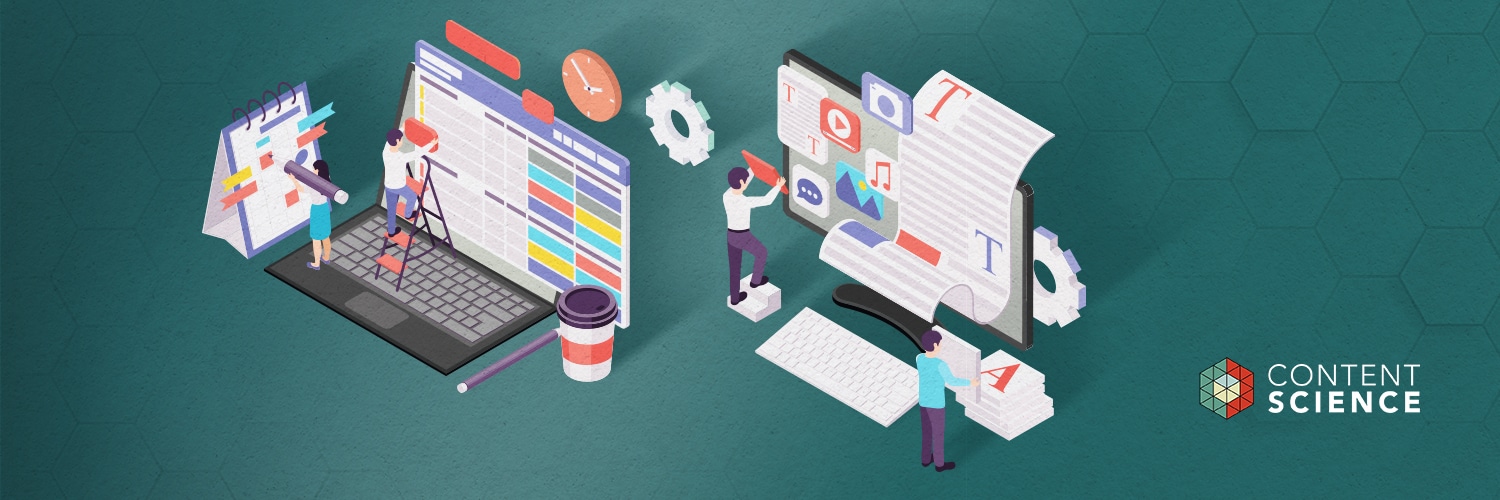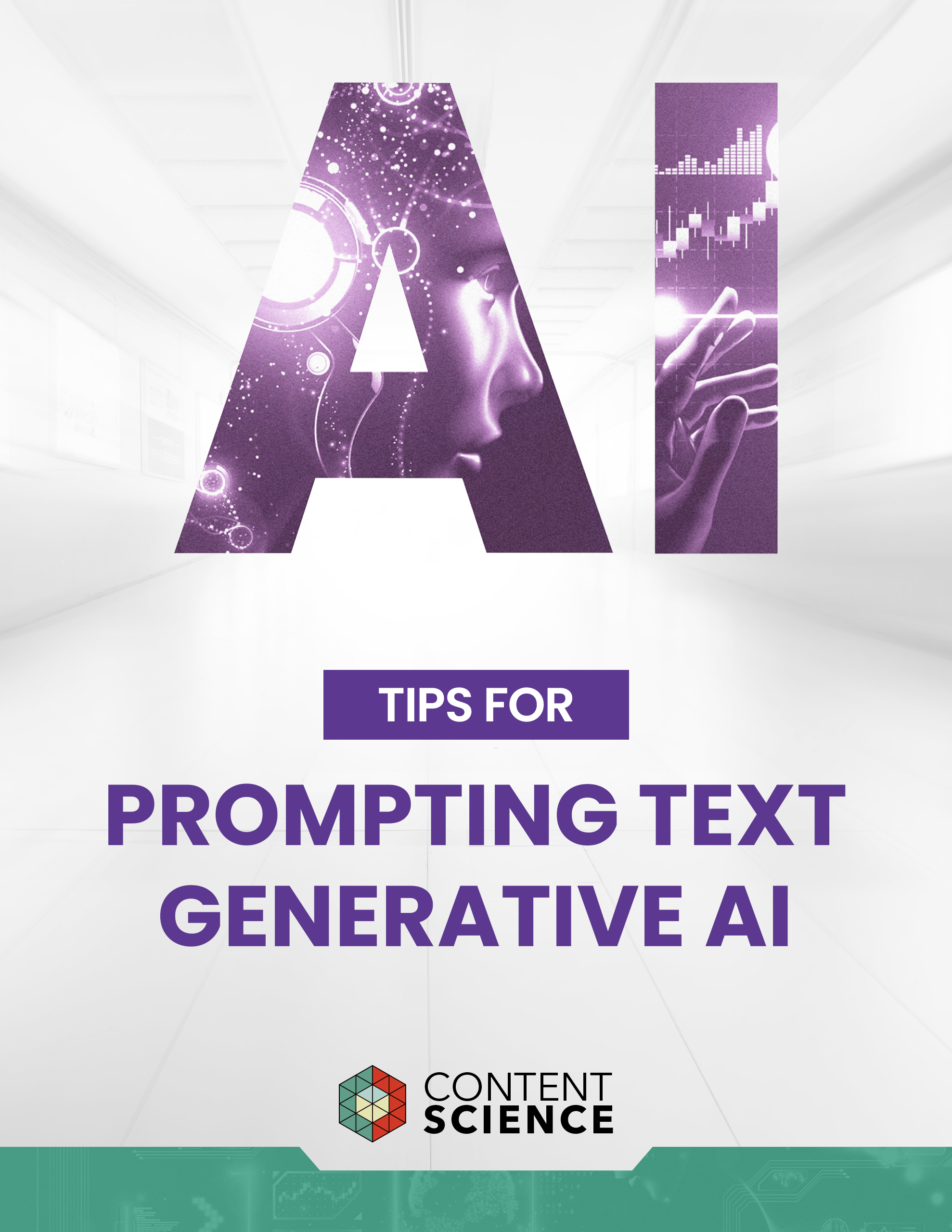
Is your content useful and meaningful in meeting your users’ or customers’ goals? If not, it is likely failing to engage your audience–let alone help them accomplish what they came to your website or application to do.
It is essential that your organization makes content useful. In fact, we have found this to be so important that Content Science includes Content Usefulness and Content Relevance as two of the six dimensions of content effectiveness we measure with our ContentWRX software.
ContentWRX evaluates content effectiveness across these six dimensions: discovery / findability, accuracy, usefulness, relevance, polish, and influence. Our research has found that if your customers view your content as both useful and relevant, they will be much more likely to view it as effective. And, our ContentWRX data found that overall effectiveness scores (or what we call ContentWRX scores) were highest when people perceived content as both useful and relevant.
This step-by-step starter guide walks through key ways to get your content usefulness initiative going.
Step 1: Align Content Creation with Customer Personas and Journeys
Review your customer personas and journeys and ask yourself or your team:
- Which customer persona or segment is this content for?
- At what stage or step in their journeys will customers use this content?
- How can this content answer the questions customers have?
- How can this content show sensitivity to customer emotions?
- How can this content help a customer make a decision or complete a task?
- How can this content help a customer get to the next stage or step in the journey?
Step 2: Specify the Content Audience in the Content Itself
Your customers are busy, so don’t make them waste time guessing who the content is for. Tell them.
For example, Bloomberg Media Distribution proudly states it is the leading provider of news, photos, videos, and data to publishers, broadcasters and other companies in more than 130 countries. Nike’s Training Club app names it straight out of the gate when it says it’s “training for every body and mind.” They’re casting a wide net with every body and mind, but they make it clear this app is for those looking to train (no matter the fitness level).
Sales content might require a version for business decision-makers and a version for technical experts, stakeholders, or decision-makers. Customer service and support content might require different versions for different roles or levels of expertise. In all those cases, stating who the intended audience is will help your customers know whether the content is pertinent.
Step 3: State the Usefulness in the Content Itself
Similar to specifying the content audience, don’t make customers guess why the content is useful. Say it proudly.
One technique we find helpful is to imagine your customers asking you, “So what?” Provide the answer immediately in the content.
Etrade.com uses this technique in its advice and guidance content. The intro paragraph in their section on “Investing Basics” starts with the question they imagined their audience asking:
What is diversification and asset allocation?
They waste no time in answering but before they explain they underscore the importance of investors starting with these concepts. See how they enter the conversation with a bold statement geared for their audience, then quickly follow with support of why this content matters:
Every investor should begin with these two key ideas.
Diversification can be summed up with the familiar phrase: “Don’t put all your eggs in one basket.” Including different types of investments in your portfolio may help reduce your losses if one type—stocks, for example—take a hit when other investments like bonds remain steady or go up.
Investors achieve diversification through a process called asset allocation, which simply means figuring out how your funds will be spread among different types of investments, such as stocks, bonds, and cash. Diversification may reduce risk, but investors also want to earn a return, and so they need to strike a balance between risk and reward.
And, it doesn’t hurt to remind customers of the usefulness if the content is lengthy or requires deep interaction.
Step 4: Check Whether You’re Meeting the Needs of Advanced, Expert, or Specific Customers
If people report that content is not useful in ContentWRX, we ask why. The most common reason? Content is too general or basic. The least common reason? Content is too detailed or advanced. Consider whether you are repeating the same basic, high-level information again and again or tailoring content to the needs of important or high-value customers. As consumers become more digitally savvy, they’re also becoming more discerning and likely to click past what we like to call “lowest common denominator content.”
For example, we worked with a credit monitoring company to develop a content strategy for consumers in a post-Equifax data breach world. We discovered that the credit monitoring content ecosystem repeats many basics over and over. We identified many exciting opportunities to better meet the needs of a wide range of consumers with different credit experiences. If you try to reach everyone with the basics, you risk reaching no one very effectively.
Next Steps
Follow these steps and suggestions to begin to put together a plan for improving content usefulness. Once you have identified what your organization needs to do to get started with content usefulness, an essential next step is to find out (using a tool such as ContentWRX) how your content is currently performing in terms of usefulness. Understanding where you are will help you determine how fast and how far you have to go to make sure you have useful content. You can also learn more about content usefulness in The Content Advantage or by partnering with Content Science.
This article is part of our ongoing series of Starter Guides, developed to help you make improvements across the six dimensions of content effectiveness: Discovery, Accuracy, Polish, Relevance, Usefulness, and Influence.
Events, Resources, + More
Workshop: Are You Ready for AI?
Is your organization really ready for AI at scale? Let the Content Science team guide your leaders through assessing 4 areas of readiness.
Course: Prompting Text Generative AI
Learn how to bring out the full potential of text generative AI to create impactful content from this on-demand course.
Webinar: Benchmarks for Content Effectiveness
It's not about more content. It's about more effective content. Gain tips based on Content Science's unique research + experience.
The Ultimate Guide to End-to-End Content
Discover why + how an end-to-end approach is critical in the age of AI with this comprehensive white paper.






Comments
We invite you to share your perspective in a constructive way. To comment, please sign in or register. Our moderating team will review all comments and may edit them for clarity. Our team also may delete comments that are off-topic or disrespectful. All postings become the property of
Content Science Review.